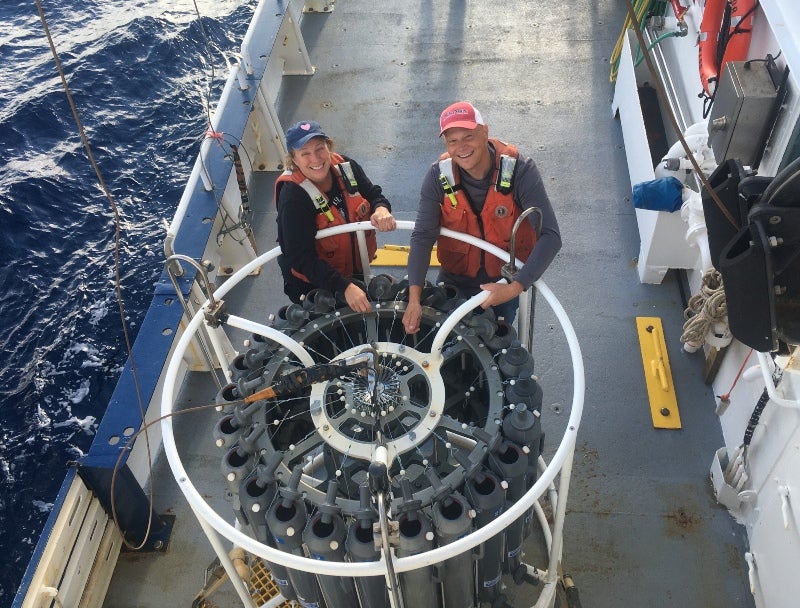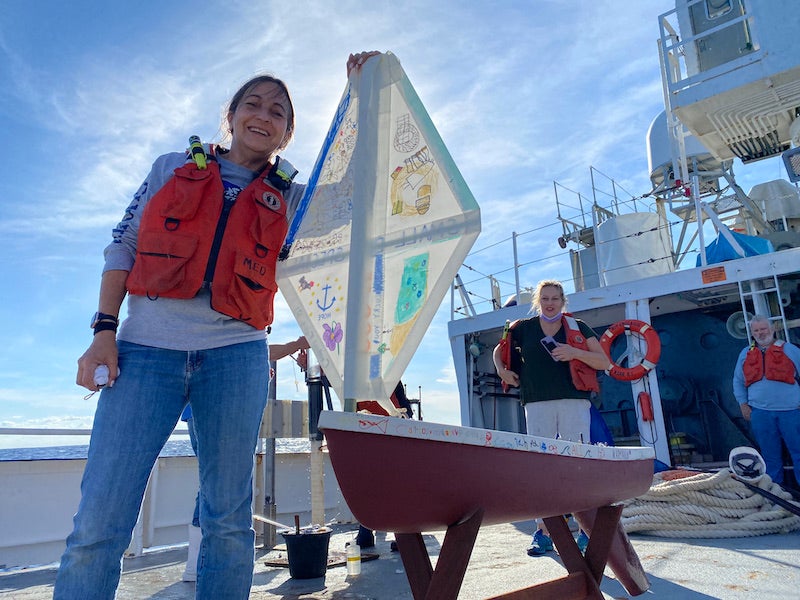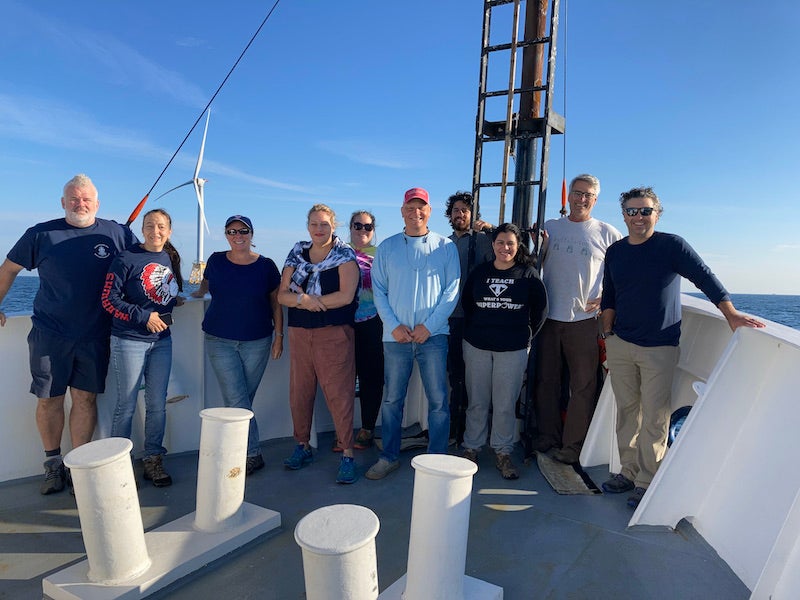During the first weekend of October, eight Rhode Island educators boarded R/V Endeavor, the University of Rhode Island’s 185-foot research ship, as part of the Rhode Island Teachers at Sea (RITAS) program, to get experience as oceanographers. With the help of Graduate School of Oceanography professor and associate dean David Smith and ship’s crew and marine technicians, they deployed oceanographic instruments, collected sediment samples from a mile deep, studied plankton and analyzed data about the physical properties of the water column.
Sponsored by the URI Graduate School of Oceanography, the three-day expedition is designed to establish partnerships between ocean scientists, researchers and educators who live and teach in Rhode Island. It is funded by the Rhode Island Endeavor Program, a state-funded effort to provide URI researchers and local educators with access to the scientific and educational capabilities of an ocean-going research vessel. Educators selected for the RITAS Program become part of a scientific research team conducting ocean science research during a cruise aboard Endeavor.
“The hands-on experience of ocean exploration was invaluable,” said Charlene Tuttle, a teacher at Lawn Middle School in Jamestown. “Deepening understanding of bacteria in the ocean, variables impacting mixing, and ocean ecosystems were all great takeaways! I felt like a welcome part of the team, working alongside scientists and crew on Endeavor.”
In addition to the hands-on science, the teachers also learned about the ship’s operations and the physical aspects of working at sea.
“Our main objective is to try to get teachers to experience how science is performed at sea,” said Smith. “Working at sea can present some unique challenges not encountered while working in a lab on land. As the teachers learn it takes a lot of cooperation among scientists, marine technicians and crew for it to be successful.
“We also want to let people around Rhode Island know about this incredible vessel that has served as an ambassador for the state for so many years,” he added.
James Kaczynski, also a teacher at Lawn Middle School in Jamestown, said, “When I got back several people asked me how it was and what I learned. My reply was that I learned what and how: I learned what scientists are doing, what life at sea is like, how the work is done, how much we know along with how we know it, and how much we don’t know, and the things scientists are doing to try to figure it out.”
Participants on this year’s RITAS cruise were:
- Christopher Munzert: Mt. Hope High School, Bristol
- James Kaczynski: Lawn Middle School, Jamestown
- Catherine Rickert: Central Falls School District, Central Falls
- Michele Percival: Trinity Academy for the Performing Arts, Providence
- Castine (Cassie) Audette-Ezzell: Girl Scouts Southeastern New England, Warwick
- Alison Murray: Central Falls High School, Central Falls
- Charlene Tuttle: Lawn Middle School, Jamestown
- Art van Meeteren: New England Institute of Technology, East Greenwich
The three-day expedition also included the launch of a “miniboat,” a six-foot long solar powered drifter that is propelled by winds and ocean currents. During the past summer, GSO staff and graduate students partnered with the Central Falls School District Expanded Learning Community and Educational Passages to offer a hands-on opportunity for 3rd and 4th graders to build a miniboat which they named Square Mile.
Launched on October 2nd by Central Falls High School teacher and RITAS participant Alison Murray, Square Mile is now sailing the Atlantic collecting data using a sensor pack—providing location, orientation, and air & water temperature data—installed by Central Falls High School students. All are invited to follow the Square Mile’s journey online.
For more information on the RITAS and GSO Miniboat programs, please contact GSO Public Engagement.



